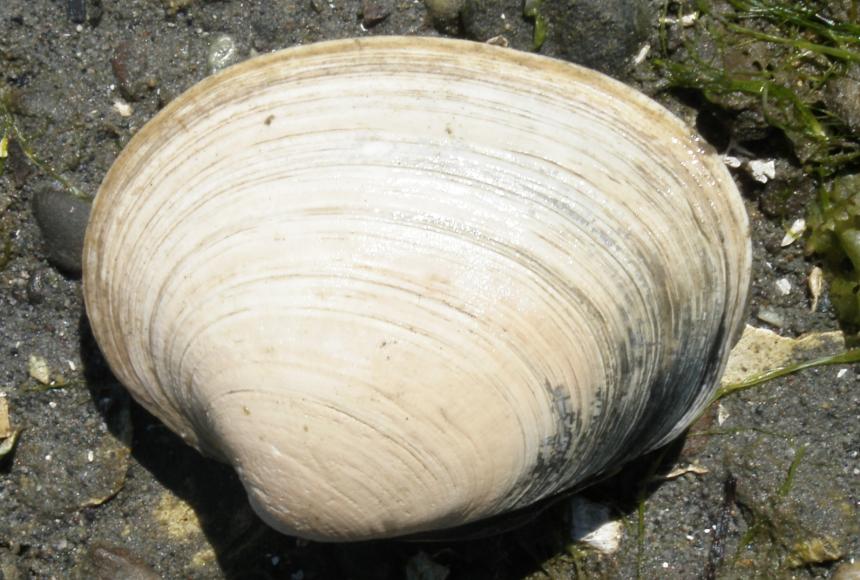Clams can be dug by hand or hand-operated fork, pick, rake, or shovel. Each digger must use a separate container to retain catch. Digging equipment may be shared. Clam holes must be refilled. To reduce clam mortality, please push any undersized clams into the refilled hole. Warning: butter clams retain marine biotoxins longer than other clams. Always check the local biotoxin status before harvesting via the biotoxin hotline (1-800-562-5632) or www.doh.wa.gov/shellfishsafety.
Description and Range
Physical description
Butter clams are oval and flattened in shape with thick, chalky shells up to 5 inches in length. The shell has concentric rings only, no lines radiate from the hinge. Shells are white to grey or yellow in color, and blue or pink staining may be present. Butter clams are heavy for their size. The tip of the siphon is black.
Butter clams are buried up to 18 inches deep in sand, gravel or cobble and they occur from the mid-intertidal to subtidal zones.
Geographic range
Butter clams can be found from central California to the Southeast Bering Sea, Alaska.
Regulations
Licenses and permits
Anyone digging for clams in Washington must have a valid license that includes shellfish harvest. See the Sportfishing Rules Pamphlet for more information, or visit a license dealer.
Rules and seasons
Minimum size 1½ inches measured across longest distance of the shell. Daily combined limit of all clam species (excluding HORSE CLAMS and GEODUCKS) no more than 40 clams, not to exceed 10 pounds in the shell.
Recreational clam seasons are beach-specific and may change annually. Check this year’s seasons here: Public clam, mussel, and oyster beaches. Always check the DOH biotoxin status before harvesting.
